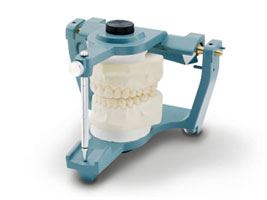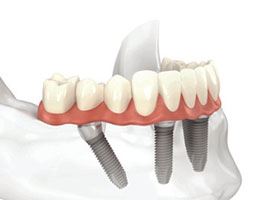No products
To be determined
Shipping
0,00€
Total
Product successfully added to your shopping cart
Quantity
Total
There are 0 items in your cart.
There is 1 item in your cart.
Total products
Total shipping
To be determined
Total
How much implants should be chosen and divided in a toothless space?
Planning a number of implants and their dividing

Historically the implant placement is caused by the conclusion of a surgeon and state of bone tissue in that area. Modern concept provides movement "from top to bottom" in which the starting point is the planned prosthetics on which then held preparatory planning procedures. Implantation based on a study of diagnostic models, using radiographs and should be carried out so as to ensure optimal appearance, phonetics, chewing function, the possibility of oral hygiene. There are no clear rules for determining the number of implants required restoring in the dental arch with partial edentulous, there is only the highlights. Good understanding of the biomechanics of implants will optimize the treatment plan for each case and reduce the risk of functional failure. Using a diagnostic wax model, we can determine the number of implants in each case: the number will be determined by the length of the defect. Since this is a subjective decision, appropriate account the following points.
Mechanical
• Long implants are preferably than short ones, in case if there is no overheating during their placement
• Bicortical fixation
• Preferably inserting the implant into a denser, but not the densest bone
• High occlusal load requires more implants
Questioning and inspection will help identify important factors such as erasing the teeth, bruxism and " clanking " teeth and hypertrophied masseter muscle, broken dentures and fractured fillings.
• The load is better distributed along the long axis of the implant
• Cantilever beam projection normally is shorter than the distance between two nearest implants
• Implants should not be inclined to each other
Aesthetic
• The implants must be connected to bits
• The distance between two implants should not be less than 3 mm, if they are parallel
• Implants and their connecting components planned should be placed inside the prosthesis
• Implants and their connecting components must not impede the hygienic measures . Optimal number of implants is determined taking into account all these factors
Distal

As a rule, the distal portions of the jaws are advisable to install one implant instead of each missing tooth. Diagnostic wax patterns together with the necessary radiographic studies will help determine location and slope of the implants. Biomechanically considered that implants should not be installed in a straight line, and they should be slightly displaced relative to the vertical. This option creates the effect of the location of the tripod and improves biomechanical stability of the complex bone-implant - prosthesis. The minimum distance between the implants 3 mm must be observed to avoid damage to soft tissue. A greater distance may be required if the implants are converging, as this will provide the necessary space for the prosthesis components.
Front area
In the anterior region is not necessary to install one implant instead of each missing tooth, making bridges with support implant can provide a very natural appearance. Since the location of the implants may affect the final appearance of the prosthesis, at this stage it is necessary to predict.


